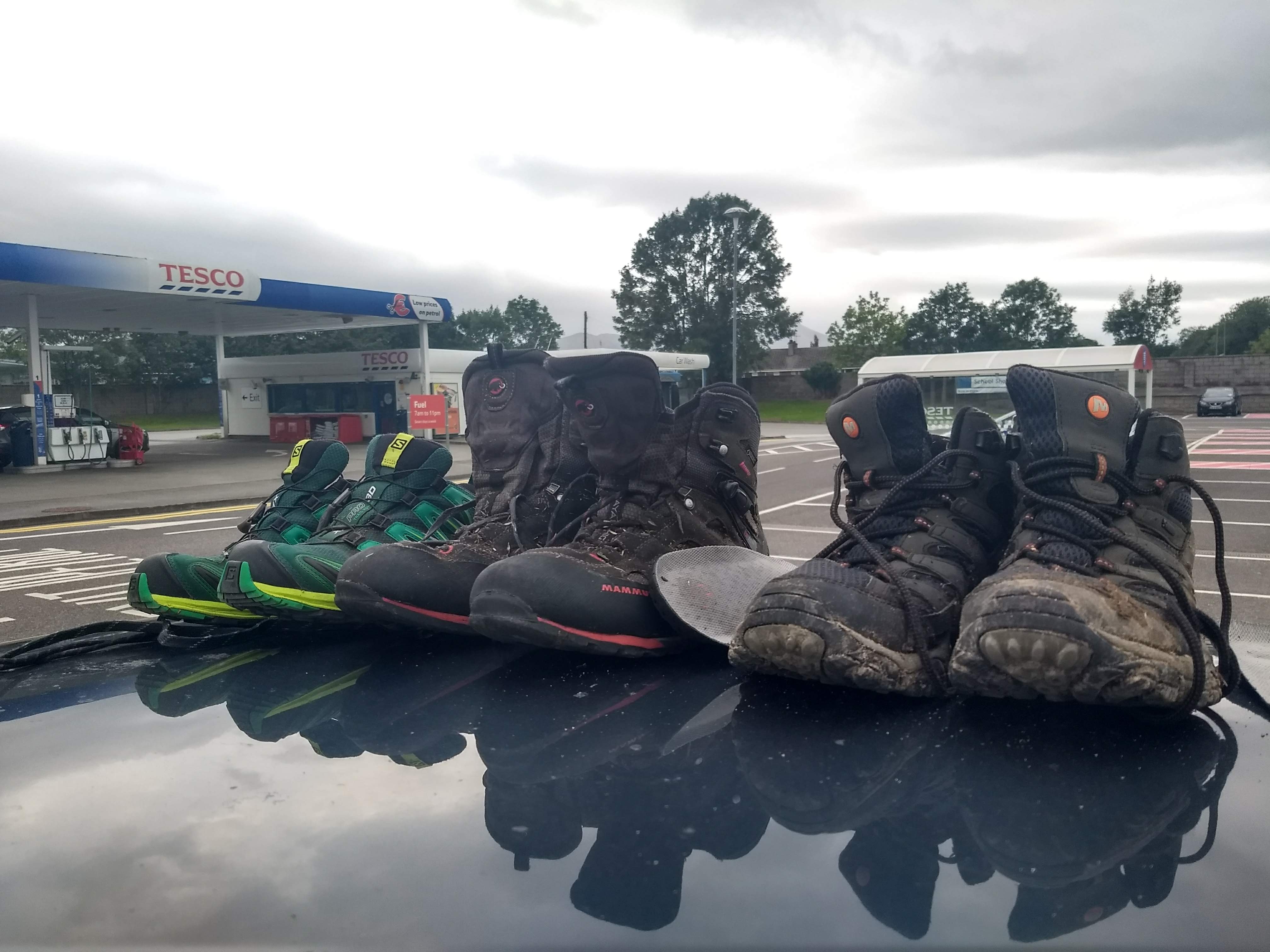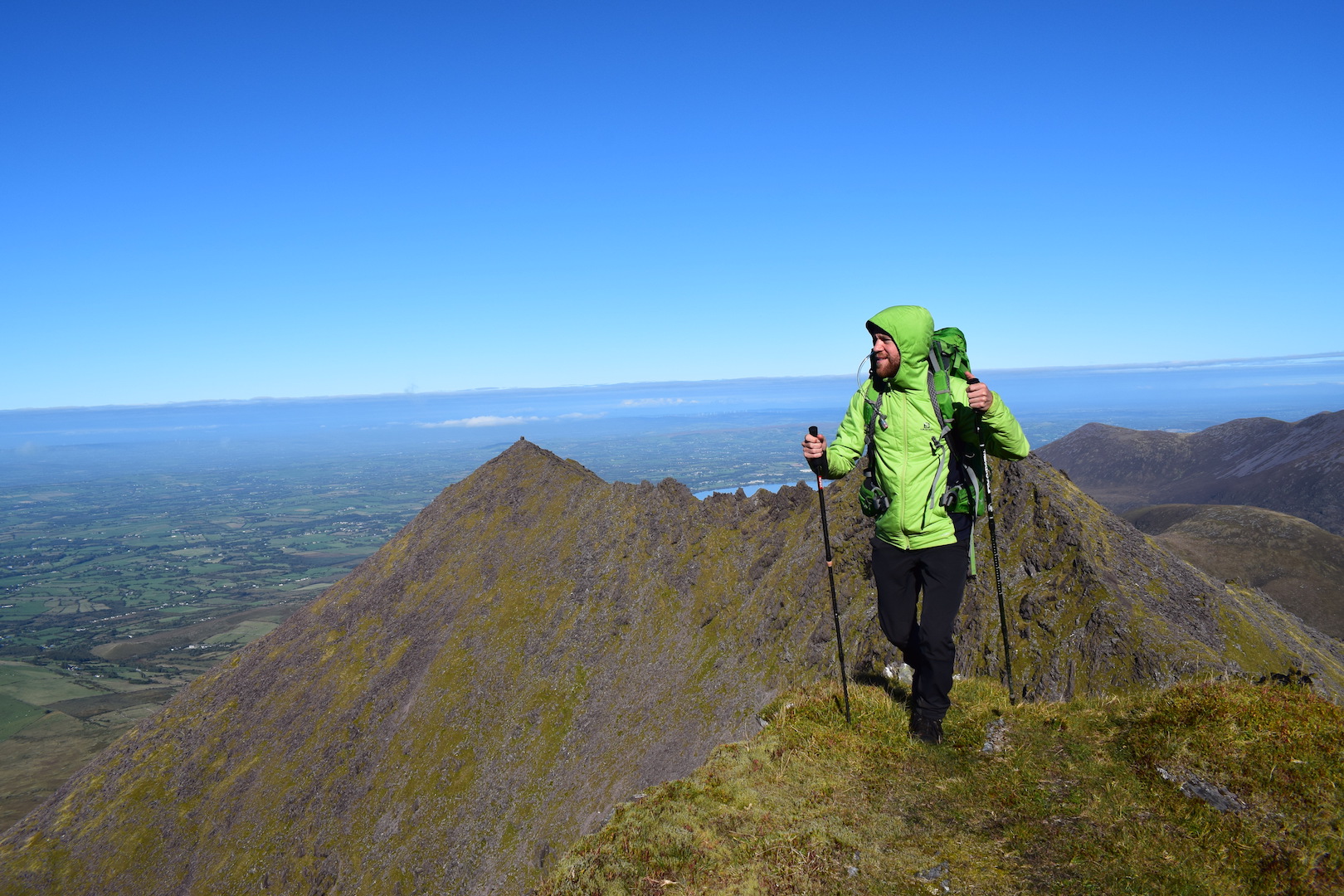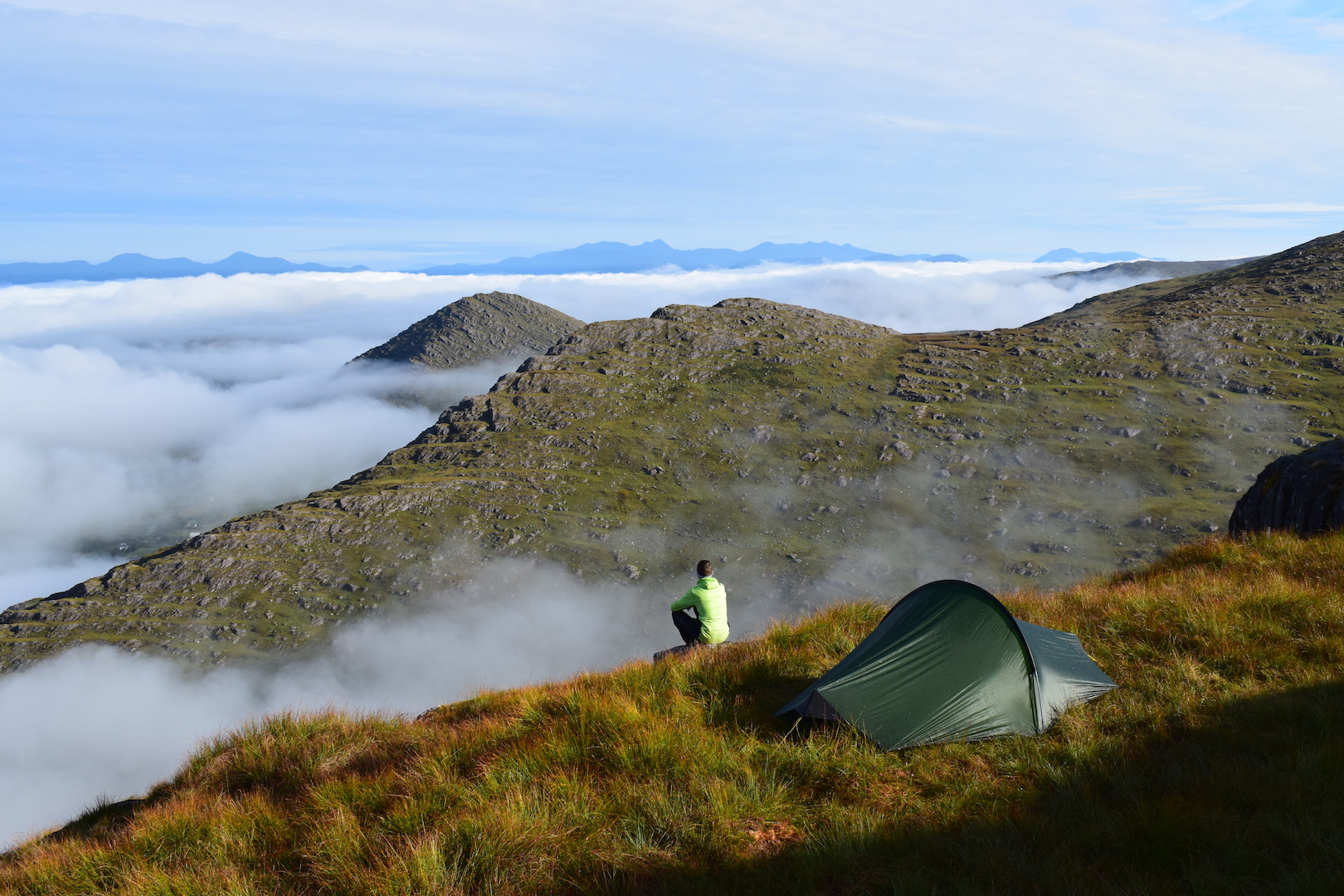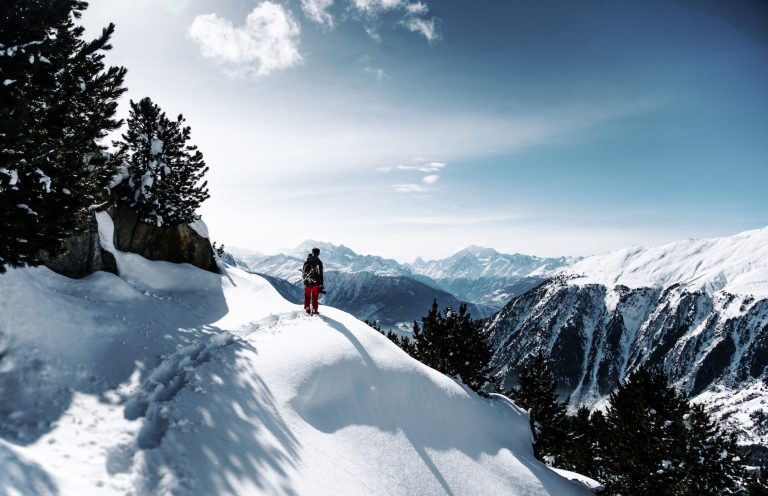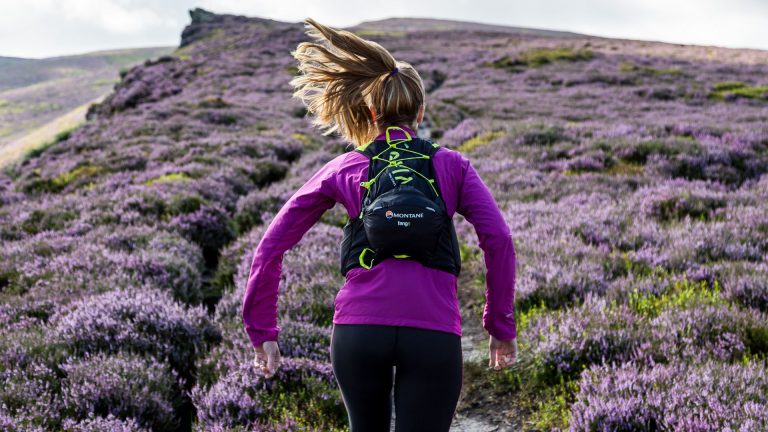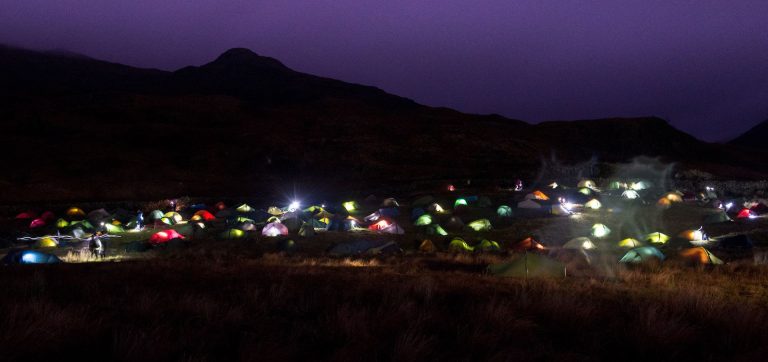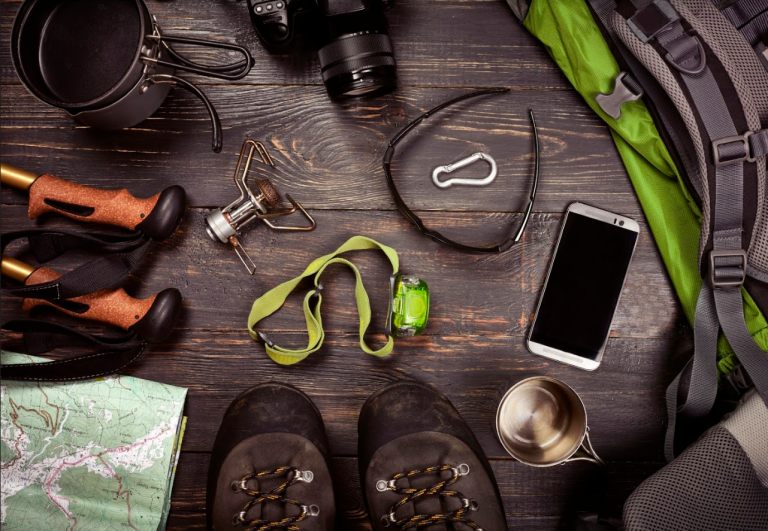Lesson 4: Invest In Ultra-lightweight Gear To Avoid Backache
Backache is another problem that plagues long-distance hikers. I’ve suffered from it on numerous occasions – and it always reminds me of that hilarious scene in Bill Bryson’s A Walk in the Woods, when Katz, at the end of his tether, begins angrily removing items from his ludicrously overweight backpack and throwing them out over the Appalachian Trail. So, desperate to avoid the dreaded back pain on my Ireland expedition, I invested in a range of ultra-lightweight gear to drastically reduce the base weight of my backpack.
The biggest weight savers were my Alpkit Kraku stove (45g), which is marketed as “possibly the world’s lightest commercially available micro camping stove”; my Klymit Inertia X-Lite sleeping mat (175g); my Alpkit Pipedream 200 sleeping bag (545g), and, as mentioned above, my Terra Nova Laser Competition 1 (970g). Of course there were minor compromises. The stove was slower to heat water than my Jetboil and struggled in strong winds; the mat took a bit of getting used to; and I wished, on occasion, that my sleeping bag was warmer (my Rab Silk Mummy Liner helped to maximise the warmth). But overall the sacrifices were worth it.
The strategy really paid off and, coupled with the excellent hip belt and mesh system of my Osprey Atmos AG 65, I barely suffered any back pain in Ireland. Result.

Lesson 5. Poles Are Essential Not Optional
I used to think walking poles were for anorak-wearing rambling geeks. But now, after my 273-mountain Ireland challenge, I swear by them. I never go out into the hills without hiking poles – they are my new essential, not optional, accessory. Why? Well, firstly, they saved a huge amount of strain from the knees. Without them, I found myself getting pangs of pain and an aching sensation in both knees while descending. But, once I’d bought a pair of Alpkit Carbonlite Twins, I found the anchor points provided more stability and balance during descents and seemed to cushion each step enough to end all of the knee pains and aches.
Related: Advice For Camping in the Rain
Related: How To Stay Safe In Winter Mountains
The benefits of using poles weren’t just for my dodgy joints though. They were useful for river crossings, they enabled me to dig in and power uphill more efficiently and rhythmically, and they stabilised me on rough and uneven terrain. Oh, and they served as the base for my makeshift washing line while trying (and mostly failing) to dry out kit on my wild camping adventures. So, in conclusion, I don’t care if they make me look like an anorak-wearing rambling geek: walking poles are my new indispensable piece of hiking equipment.
Lesson 6: Develop Your Own Little Strategies That Make Life Easier On The Trail
The more time you spend on the trail, the more you’ll develop your own little habits, strategies and tricks for making life easier and more comfortable on the trail. There’s no substitute for getting out there and learning what works for you. But, if it helps, here are a few of the best tricks and tips I developed along the way in Ireland: ball up your spare clothes in a dry sack for the perfect wild camping pillow; take an ultra-lightweight spare torch, like the Petzl e-Lite (26g), rather than spare batteries – it’s far easier to grab and use when your main head torch runs out of juice; and decant cheap noodles into an empty expedition meal pouch, the insulated interior will boil up your meal and is far less bulky than a pot.
During my 273-mountain challenge, I also quickly learnt which gear and clothing performed well, saved me time and made my life simpler. The in-built filter of my Water To Go bottle, for example, was a far more efficient way to access clean water than any tablets or drops. My stash of Summit To Eat expedition meals were a godsend too: super-quick to make (simply add boiling water), nutritious and, joyously, created no washing up at the end. And my synthetic jacket – a Salomon Drifter Mid Hoodie M – retained its warmth even when wet, an ideal alternative to my down jackets.
So, what are you waiting for? Grab your boots and your tent, hit the trail, and begin learning your own lessons about outdoor gear.
